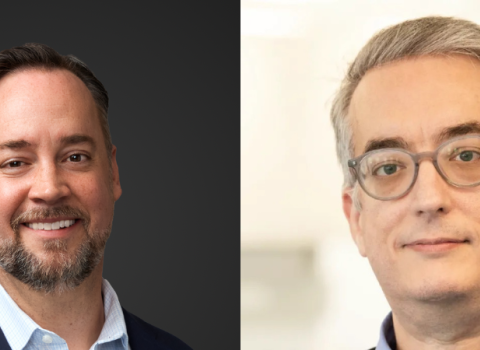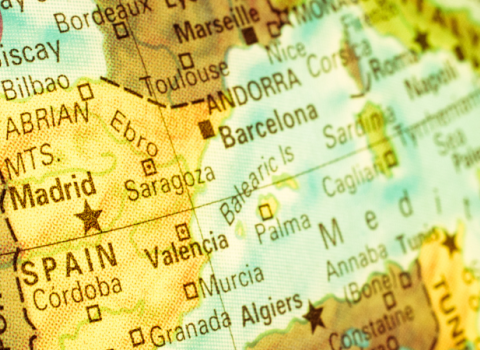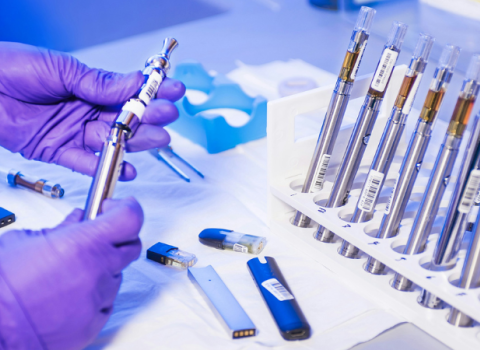It is getting ever easier to create deadly pathogens in the lab. Research funders, universities and governments need to come together under a new global body to tame this risk, experts warn.

It began with a mysterious outbreak of monkeypox, a disease that starts with a fever and headache, erupts into lesions covering the body, and then kills around one in ten people infected.
As the outbreak spread, scientists discovered something strange. The strain had been genetically modified to be far more contagious than during previous flareups in central and west Africa. And it was resistant to the smallpox vaccine, one of the few defence measures against monkeypox.
By the time the monkeypox pandemic had circled the world, killing 27 million people globally, intelligence agencies learned this virulence was no accident. It had been made deliberately more deadly by scientists sympathetic to a terrorist group wanting to wreak havoc on a neighbouring state. The engineered pathogen had been covertly dispersed into crowded train stations.
Eighteen months into the pandemic, this souped-up version of monkeypox had inflicted an almost unimaginable toll: more than three billion people infected, and more than 250 million killed.
This was the scenario war-gamed by around a dozen of the most senior figures in public health and biosecurity at last year’s Munich Security Conference.
They included representatives from the US National Security Council, the World Health Organisation, the heads of the Chinese and African centres for disease control and prevention, plus executives from pharmaceutical and biotechnology firms.
Playing out this engineered monkeypox pandemic, these stewards of global health came to some grim conclusions, which have only been made public in recent months.
“The next global catastrophe could be caused by the deliberate misuse of the tools of modern biology or by a laboratory accident,” the resulting report warns.
Research funders, universities, companies and science policymakers urgently need to tighten up control over lab safety and potentially risky research, it urges. The current system, “Is neither prepared to meet today’s security requirements, nor is it ready for significantly expanded challenges in the future.”
And the world needs a new international body to help tame these dangers, the report concludes.
Now, the Nuclear Threat Initiative (NTI), a Washington DC-based nonprofit which organised the war-game, is trying to set one up by the end of the year.
“There's no institution that's set up with the ideal features to really tackle this head on, and move at the pace that needs to happen,” said Jaime Yassif, senior director of the NTI’s programme to control dual use bioscience. The NTI is currently recruiting an executive director for this new organisation, dubbed the International Biosecurity and Biosafety Initiative for Science (IBBIS).
Gain of function
What makes new controls so urgent are extraordinary advances in synthetic biology that give scientists the power to create deadly pathogens.
“There's a whole suite of new tools that are enabling researchers and developers to read, write, edit, and evolve biological systems,” said Megan Palmer, executive director of Bio Policy & Leadership Initiatives at Stanford University.
This allows scientists to “much more easily and precisely engineer” the genome of disease-causing agents in ways that could make them even more dangerous, she said. This type of research, which came to global attention during the pandemic, goes under the name of "gain-of-function research of concern” or “enhanced potential pandemic pathogen”, Palmer said.
In another example of the Pandora’s box of tools now available, in 2017 researchers in the US and Canada revealed that they had managed to construct the extinct horsepox virus from mail ordered DNA fragments.
This raised the prospect that terrorists – or just an overly curious scientist – could resurrect closely related smallpox, which killed an estimated 300 million people in the twentieth century before being eradicated by vaccination.
Lab leaks
The first scenario that worries the NTI is an accidental lab leak. In biosafety circles, it’s common knowledge that such accidents happen with unnerving regularity.
Severe acute respiratory syndrome (SARS), which emerged in China in 2003 and kills around one in seven people it infects, subsequently escaped from labs in no fewer than three places: Beijing, Taiwan and Singapore. The Beijing outbreak ended up infecting nine people, of whom one died.
One recent survey of lab leaks in the Asia-Pacific region counted close to one outbreak a year since the 1980s, with lab workers in Japan, South Korea, Taiwan, China, Singapore, India, Australia and Malaysia accidentally infected in a range of accidents, from broken vials to cleaning up spilled waste.
Europe is no stranger to these kind of accidents. Last year, France imposed a moratorium on research into the prion protein after a second possible case of Creutzfeldt-Jakob disease, the degenerative brain disease it causes, was diagnosed in someone who worked in a prion research laboratory.
Even though the scientific literature is awash with reports of lab leaks, the true number is likely to be much higher, as incidents are often not made public. One recent survey of 60 biosafety officers, largely based in the US, Canada and New Zealand found that almost two-thirds do not send accident reports outside their own institution.
“The underreporting of such infections is widely acknowledged due to fear of reprisal and the stigma associated with such events,” says an assessment of the evidence by the Belgian Biosafety Server.
One recent study by the Chinese Centre for Disease Control and Prevention paints a troubling picture of lab safety. Almost half of lab personnel involved in pathogen detection reported problems with old equipment that had not been replaced. A similar proportion said there was a “lack of safety awareness” by staff. And a majority are hobbled by a lack of specific funding or dedicated biosafety personnel.
The pandemic has compounded the safety risk by pushing governments to set up more high security labs of their own in order to study future outbreaks.
There are now nearly 60 maximum security labs – known as BSL-4 in biosafety jargon – either planned, under construction or already in existence globally, according to a King’s College London study last year. More than three quarters are in urban centres, heightening the risk from leaks. And around half have been established in the past decade. “This means potential risks are proliferating,” it warned.
The elephant in the room here, of course, is the question of whether SARS-CoV-2 itself escaped from a lab.
The scientific jury is still out on whether it jumped from animals to humans, or was the fruit of experiments at the Wuhan Institute of Virology that accidentally escaped.
What is known is that the institute housed some of the closest relatives of SARS-CoV-2, and – along with US-based collaborators – was conducting experiments to make chimeric, novel coronaviruses, in part with US funding.
But even if SARS-CoV-2 did have a natural origin, it still “absolutely” makes sense to tighten up lab rules, said Yassif, because the risk remains regardless. “The fact that it's even plausible that we could be dealing with a global pandemic that could have resulted from laboratory accident” is a reason to act, she said. The NTI has been wargaming manufactured pandemics as far back as 2019. “If Covid never happened, we'd be doing exactly the same thing,” she said.
Malicious actors
The second scenario that worries the NTI is one where malicious actors like terrorists or rogue states engineer and purposefully release a new disease - as occurred in the 2021 monkeypox wargame.
Other organisations, including the US government, are also worried about this risk. Synthetic biology has “placed the ability to recreate some of the deadliest infectious diseases known well within the grasp of the state-sponsored terrorist and the talented non-state actor,” concluded a 2020 assessment by a group of life sciences researchers currently or previously based at the US Military Academy at West Point.
“Rapid advances in dual-use technology, including bioinformatics, synthetic biology, and genomic editing, could enable development of novel biological weapons that complicate detection, attribution, and treatment,” warned US intelligence services in their annual threat assessment last month.
There are already global bodies that address related issues. The Biological Weapons Convention, set up in 1972, bans the creation of pathogens for miliary purposes. But it is not designed to police civilian science, or the risk from non-states, like terrorists. “There's no institution that is dedicated as its primary mission to addressing this,” said Yassif.
The NTI’s IBBIS project is still in its early days. NTI hopes to fund it philanthropically, and Yassif is “cautiously optimistic” the money will be there to launch the organisation, although NTI is still fundraising. Its mission will be to work with academia, companies, states and philanthropists to “strengthen international biosecurity norms” and the tools and incentives to uphold them.
DNA screening
Its most pressing priority will be to improve security in the booming market for synthesised fragments of DNA – one of the first lines of defence against an engineered pandemic.
These strands are a standard tool in biology, said Nicole Wheeler, a DNA screening expert at Birmingham University in the UK, and are used in everything from COVID-19 diagnostics to the creation of pollution-eating microbes. The market has taken off as DNA sequencing and synthesis has got cheaper and more accurate, she said.
The obvious problem is that cheap mail order DNA opens the door for scientists, ill-intentioned or not, to create dangerous pathogens in their labs.
In 2009, the synthesis industry responded to this risk by creating the International Gene Synthesis Consortium, a group promising to use common screening protocols to weed out blacklisted customers or DNA fragments of deadly pathogens. It has members in the US, China and Europe.
But the consortium doesn’t include all synthesis companies. It estimates it represents about 80% of capacity worldwide.
“There are presumably some providers that are not screening their customers, and or the orders,” said Yassif.
And there are growing economic pressures on these companies to skimp on safety checks. As the cost of synthesis drops, the relative cost of security screening per order increases, Yassif said. “Providers have explicitly said this, that there is a strain on their on their economic viability.”
So far, DNA synthesis screening is entirely voluntary. There’s currently no consensus on whether we need new regulations, said Yassif. One solution might be for governments to give companies money to incentivise them to perform safety checks.
More sharing needed
IBBIS is not the only global project trying to improve biosafety – which focuses on lab accidents - and biosecurity – which is about preventing theft or deliberate release of pathogens.
The Visibility Initiative for Responsible Science is a push to get researchers, funders and journals to conduct risk assessments and share their processes with each other, finding out what works and what doesn’t.
Despite a plethora of biosecurity guidelines over the past 20 years, and more than half a century of safety advice, “There's very little accounting for and sharing of what organisations have done in practice,” said Palmer, who is one of the team running the initiative.
The nuclear power and aviation industry scrupulously record and share safety incidents, notes Palmer, but the scientific community has yet to develop such rigorous accounting for lab safety incidents, including near-misses.
“In the case of a nuclear accident or a plane going down, it's very easy to see that something went wrong and begin to understand the cause,” she said.
But it’s often much harder to work out exactly where a pathogen came from. “This latest pandemic is only one example, where uncertainty over the origins of emergent disease are reinforced by lack of data on how frequently we might expect incidents related to research activities,” said Palmer.
The private sector is particularly lightly regulated when it comes to risky bio research, several observers say. “That's a gap that many people have noted,” Palmer said. “In the US, for example, many oversight requirements are tied to public funding.”
And it’s not only research that can directly create dangerous agents that requires attention. Regulation also needs to look one step further back, and screen the indirect risk of creating and sharing new tools that allow such work. “Publishing detailed protocols around some of these tools might not be the best idea, because sometimes we actually want speed bumps in the system,” said Palmer. “Needing to request details ensures a mechanism to know who might be using those tools.” The 2017 horsepox study, which was partly privately funded, was arguably one such example of scientists being a little too open with their methods.
Journals have a role to play in screening out papers containing an “information hazard,” said Yassif – that is, not publishing research that could aid others in making a deadly pathogen.
What’s already been done?
It’s certainly not the case that scientists and governments were oblivious to these dangers until the pandemic. A flashpoint came in 2012, when, after much opposition, Dutch scientists released a study showing how they had managed to engineer airborne transmissibility in avian flu, which had already killed dozens in east Asia, by repeatedly passing it through ferrets.
The US halted such “gain of function” research in 2014, but then resumed these experiments in 2017. Last October, Republican senators introduced a bill that would put in place a moratorium on viral gain of function research, simultaneously demanding answers from China about the origins of the current pandemic.
Their broadsides against Beijing point to the extreme geopolitical delicacy of setting up a body like IBBIS. China has furiously denied that SARS-CoV-2 escaped from the Wuhan Institute of Virology, even sanctioning Australian trade after Canberra called for an international inquiry into the pandemic’s origins.
Pathogen politics has even played a part in the Russian war on Ukraine. Following the invasion, Moscow claimed that it had captured US-funded labs that were experimenting on bat coronaviruses and other risky pathogens. These claims were echoed by Russian state media and even China itself.
The danger is that a post-pandemic focus on global biosafety and security turns into an acrimonious blame game between nation states.
In this sense, a nongovernmental body like IBBIS could present itself as a more neutral solution.
“One of the virtues of a global and transnational approach is precisely that it does not single out China for unique attention and thus gives China a way to participate in working on a problem that their experts also care about – a lot,” said Philip Zelikow, a former US diplomat and State Department official who is leading preparatory work for a National Covid Commission to learn the lessons of the pandemic in the US.
He points out that China introduced its own “far-reaching” biosecurity legislation in October 2020.
This law, the first of its kind, regulates biotechnology research, lab safety and practices, and focuses on “deterring bioterrorism”, according to the Chinese government. The Chinese CDC did not respond to a request for comment from Science|Business.
As for potential US support for a body like IBBIS, Zelikow predicts Washington would react with its “usual mixture of yearning and distrust” towards global bodies.
Still, there are precedents in the regulation of nuclear labs and nuclear energy, both international and domestic, he said.
“Much of the danger actually comes from labs below BSL-4, including many private labs,” Zelikow said. “So the answers will have to include model codes for domestic regulation.”
Last month, the US took a step towards tighter controls when the National Institutes of Health announced a review of two biosecurity policies, including research on enhanced potential pandemic pathogens.
As for the EU, the Commission points to its work since 2010 establishing centres to reduce the risk of chemical, biological, radiological or nuclear incidents around the world. It supports, for example, a project in south east Asia to prevent the theft or misuse of dangerous biological material from labs.
As for labs in Europe itself, the European Centre for Disease Prevention and Control insists they are “highly regulated”. But, since the pandemic, there have been no changes in lab safety procedures, a spokeswoman confirmed.





 A unique international forum for public research organisations and companies to connect their external engagement with strategic interests around their R&D system.
A unique international forum for public research organisations and companies to connect their external engagement with strategic interests around their R&D system.